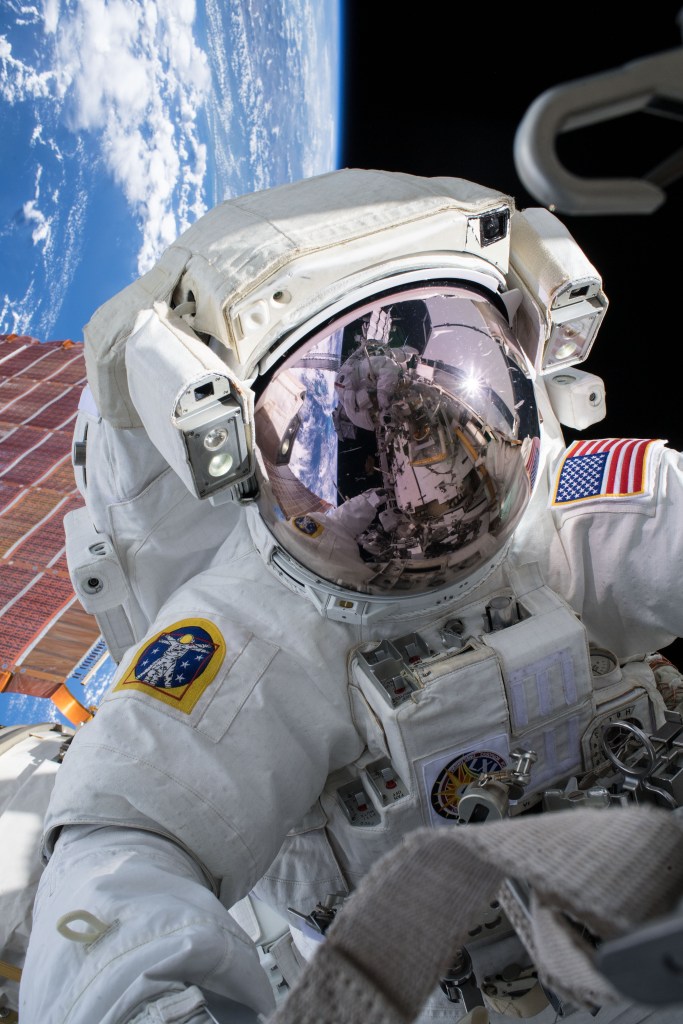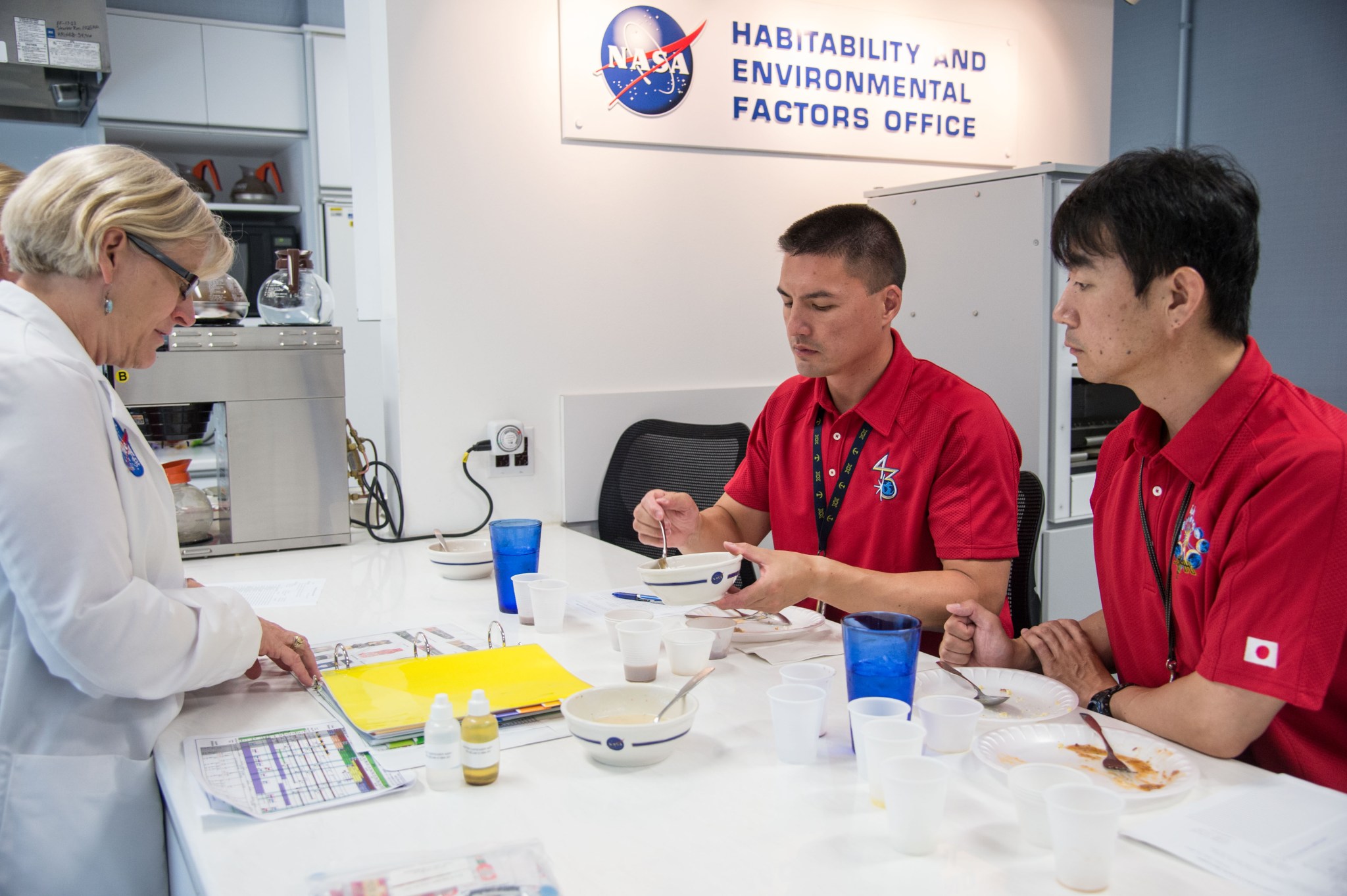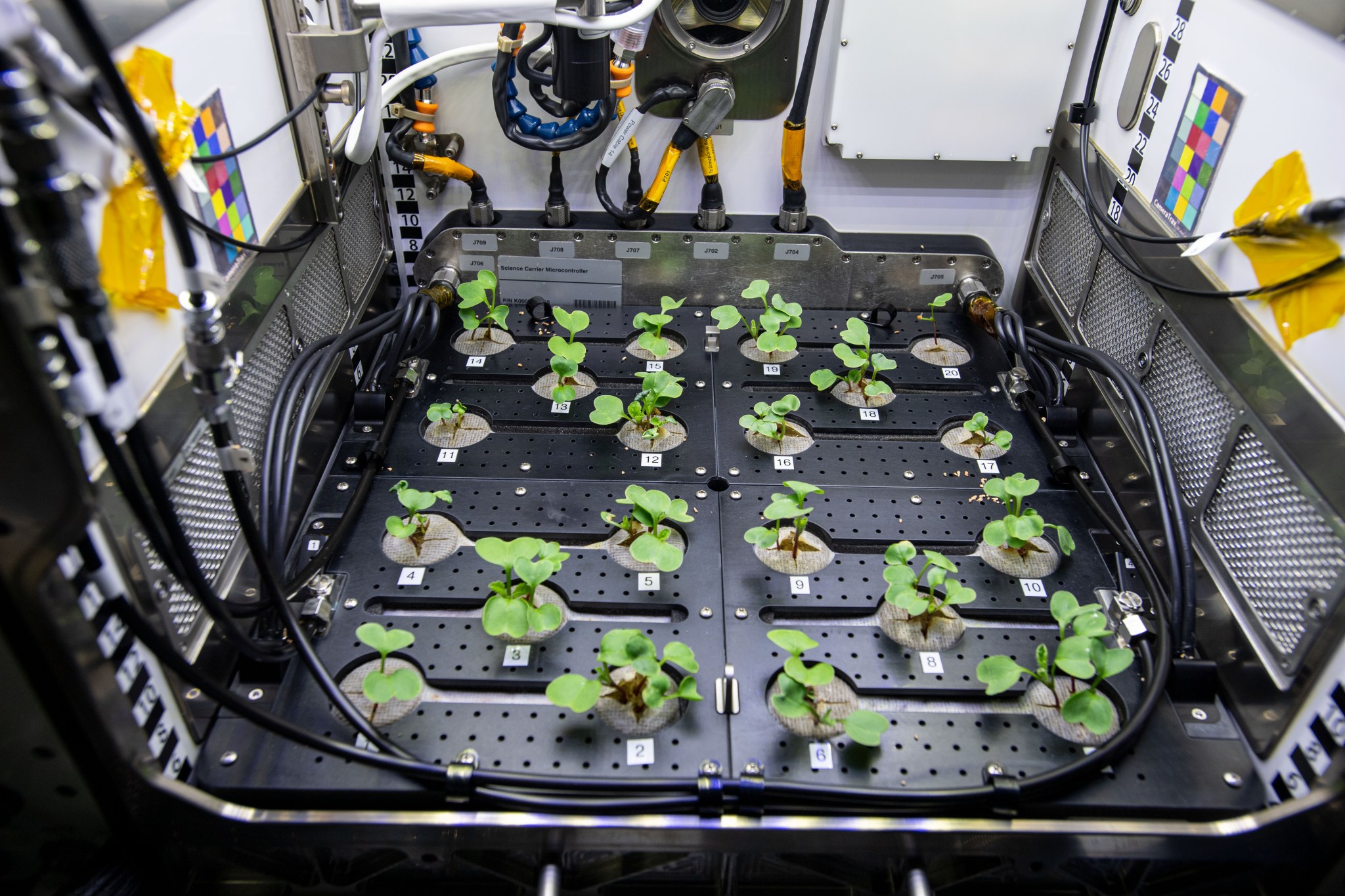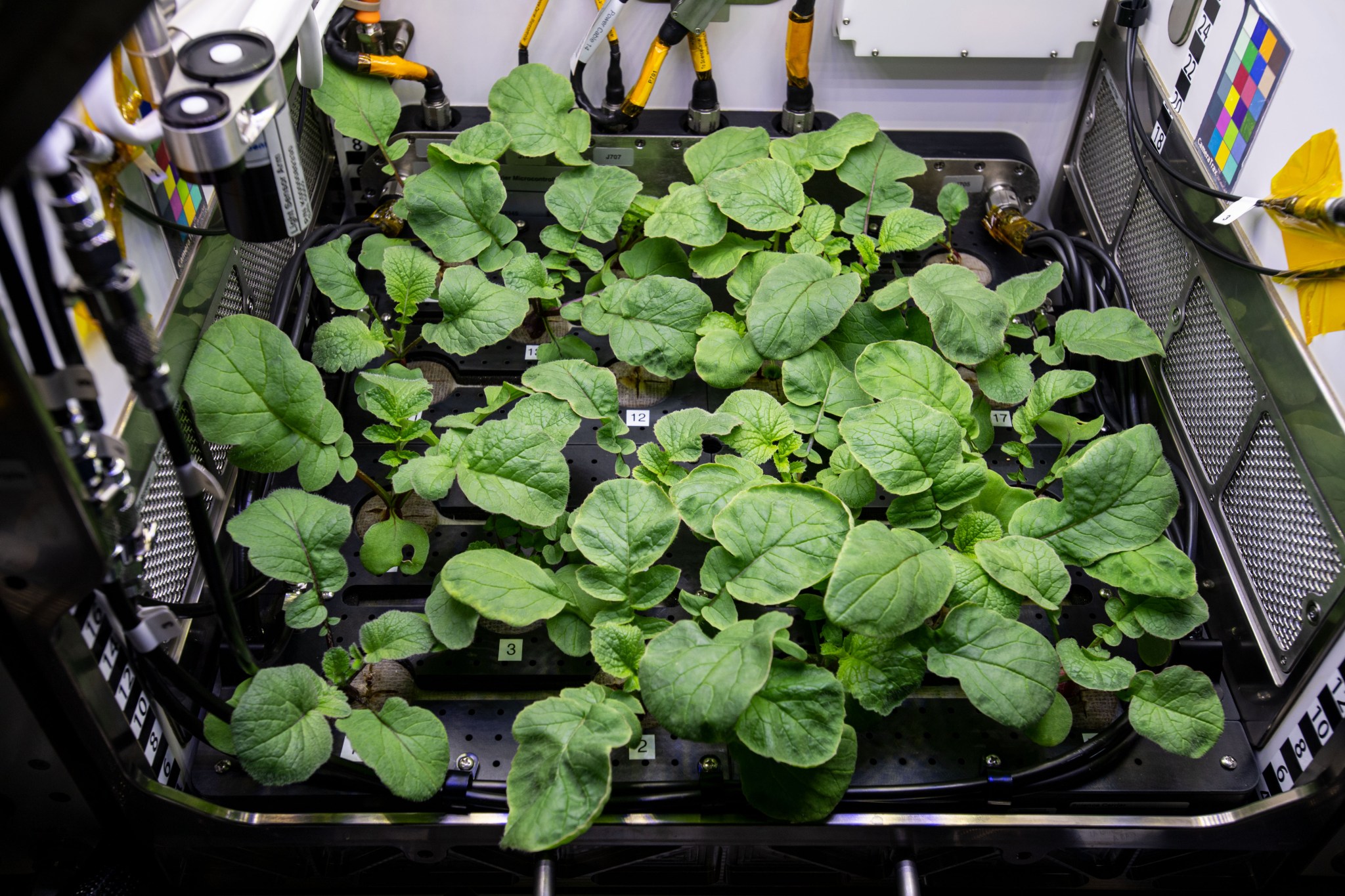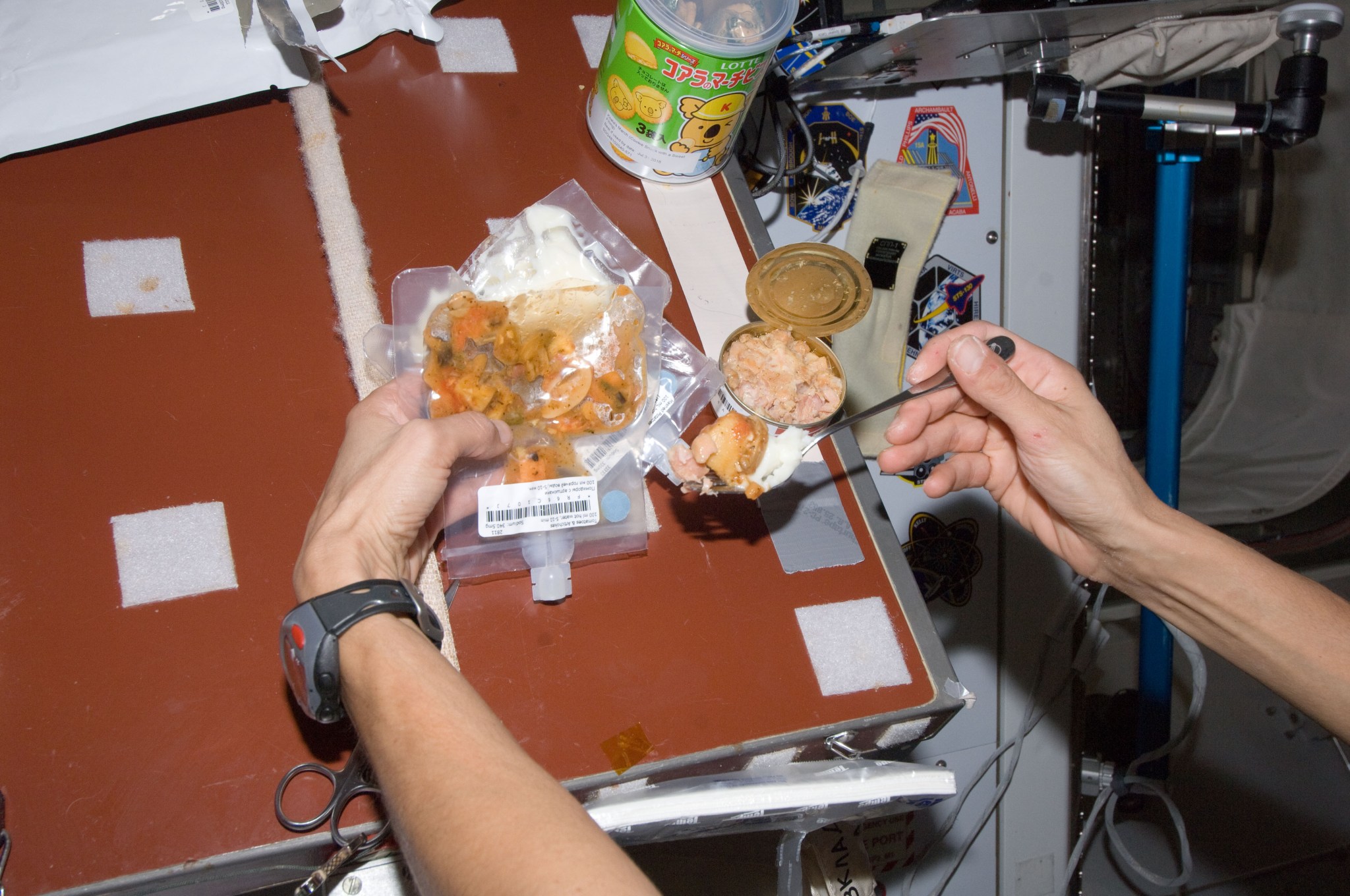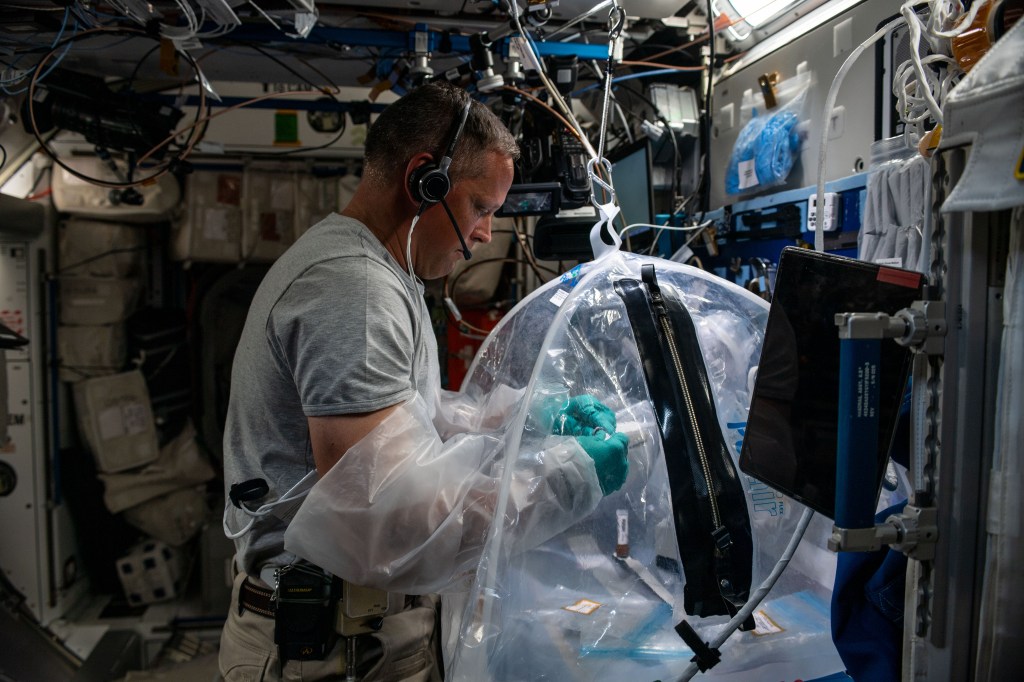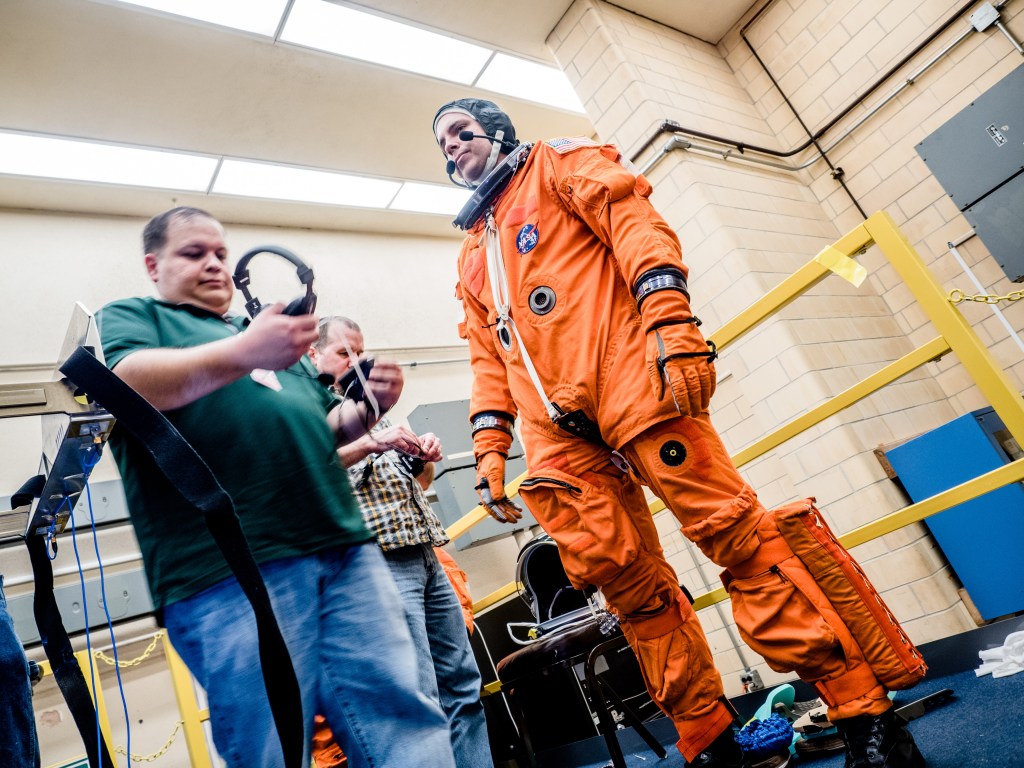Food & Nutrition
NASA Johnson Space Center (JSC) experts provide food and nutrition systems that maintain the health and optimal performance of crewmembers during spaceflight and upon return to Earth. With nutrition strongly influencing crew performance and cognition, providing a variety of high-quality food products that are appetizing, nutritious, safe, and convenient is key. The food system must also take into consideration vehicle constraints (such as mass, volume, waste and power), mission duration, and impacts on crew time. JSC’s Space Food Systems Laboratory maintains the tools and techniques required to develop and provision the current Space Food System, and to research new technologies for future food systems. JSC’s Nutritional Biochemistry Laboratory performs nutritional assessment techniques, including analyses of blood and urine samples for biochemical endocrine and other physiological markers, in addition to detailed dietary intake assessment. Space food systems capabilities including expertise, skills, and knowledge are available to support development of advanced food products, food analysis, food packaging and stowage, and evaluation of food concepts, menus and nutrition for space and terrestrial applications. Relevant applications include commercial crews, orbiting commercial platforms, as well as terrestrial operational challenges such as working and living in extreme environments, military use, and optimized human nutritional performance. We extend an invitation to our partners to leverage our robust expertise and capabilities in food and nutrition, facilitating the development of sustainable and nourishing solutions for space exploration missions and beyond.
Space Food Systems
Our unique space food systems expertise and capabilities complement our nutrition standards knowledge for high-quality food products, as well as technologies, into integrated testing of human system interfaces, human performance into system concepts, and constraints for research and mission support. The Space Food Systems Laboratory is equipped with a test kitchen, packaging facility, freeze drying facility, thermal processing facility, analytical laboratory, and sensory evaluation center.
- Production of freeze-dried foods
- Production of thermally stabilized food items at a satellite facility at Texas A&M University Research Park, College Station, Texas
- Vacuum packaging and sealing of shelf-stable food products
- Provisioning and stowing of food products to support flight
- Product development of shelf stable foods
- Sensory evaluation to quantify product acceptability and support shelf-life determination
- Design and development of nutritionally appropriate menus for space flight
- Application of various food preservation techniques and packaging design
- Evaluation of the applicability of commercially available technologies to space food systems
- Basic chemical analyses, such as moisture content, texture characterization, color, water activity, pH, and package oxygen content
Read more: https://www.nasa.gov/directorates/esdmd/hhp/space-food-systems
Nutritional Biochemistry Laboratory
The primary goal of the Nutritional Biochemistry Laboratory is to keep crews healthy from a nutrition perspective on space missions. This includes determining the nutritional requirements for extended-duration spaceflight, and to develop, evaluate, and validate nutritional countermeasures to prevent or minimize the negative effects of long-duration spaceflight on the human. The activities cover both operations and research efforts. The primary operational activity is the support of the Clinical Nutritional Assessment profile, which includes biochemical assessments before and after International Space Station flights, along with dietary intake and body mass monitoring during these long-duration ((6 to 8 month) missions. In addition to general dietary intake issues, several specific nutrients are also of concern, including vitamin D, folate, calcium, iron, and more.
The role of nutrition in physiologic systems (e.g., bone, muscle, cardiovascular, ocular, and immune) during spaceflight is critical, as is the role in behavioral health and performance.
- Performing scientific expertise and support for nutrition-related research and studies of the role of genetics on nutritional requirements
- Collaborating and contributing to writing proposals and scientific articles
- Performing analysis of nutritional, biochemical and physiological markers (e.g., bone markers)
- Performing crew training on nutrition/diet
- Collecting/analyzing dietary intake data
- Providing dietary counseling
- Developing, evaluating and validating of nutritional countermeasures and technologies
- Collaborating with space food scientists to provide dietary and nutritional requirements for space food products tailored for each design reference mission
- Clinical nutritional assessments
- Research study coordination
Read more: https://www.nasa.gov/directorates/esdmd/hhp/nutritional-biochemistry
Habitability Systems and Flight Crew Equipment
JSC personnel have the unique experience and vast knowledge of the technical challenges associated with metabolic waste management, personal hygiene, crew accommodations, galley hardware, trash management and odor control, logistics reduction and tracking, advanced clothing, housekeeping, tools and diagnostic equipment, restraints and mobility aids and unique stowage solutions.
- Habitability systems and flight crew equipment hardware development
- Performance requirements and concept of operations development
- Prototype development including use of rapid manufacturing and 3D printing
- Fabrication, assembly, and testing
- Technology demonstrations
- Certification and integration support
- Pre-flight inspections, checkouts, packing and delivery for launch
Connect With Us
Whether you are a public agency, private company, or academic institution, we look forward to hearing from you. Fill out the Statement of Interest form to submit your inquiry.
























